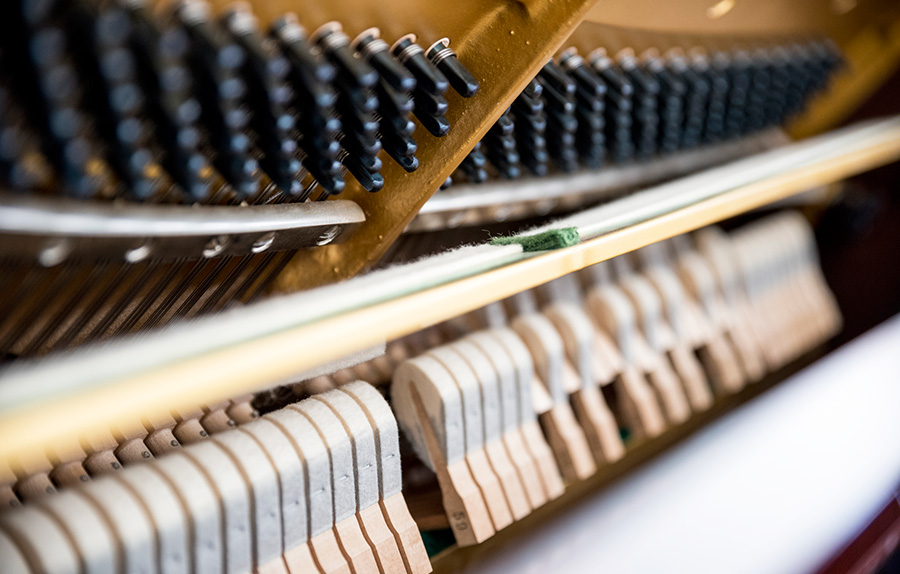Music enriches the lives of young students and is relaxing and creative for older students. The piano is a wonderful musical instrument to study. I have piano students of all ages at present. Your piano can bring you many years of enjoyment with regular tuning and maintenance.
“You may find it surprising that it is not just use that causes general wear and deterioration, it is also neglect.”
Piano tuning and maintenance are highly technical skills and your piano should be tuned and serviced once a year as a minimum. Variations in heat and humidity will cause a piano to go out of tune whether it is played or not. We experience high humidity (summer) and excessive dryness (winter) in our climate. This extreme variation causes a piano to go “out of tune” and can cause problems like sluggish playing, pitch drops and sometimes sound board splits (particularly in older pianos). Keep the Piano Room humidity as even as possible with added humidity in the winter and air conditioning in the summer. The ideal goal is 45% relative humidity year round. This is easier said than done! There are also humidity control systems on the market, specifically designed for pianos, that attach near the sound board.
Tuning to A440 (Concert Pitch) is the standard pitch used around the world and pianos are designed to operate best at this pitch (energy transfer from the strings, to the bridge, to the soundboard). Concert Pitch A440, is absolutely necessary for proper ear training, singing and playing along with other instruments or recorded music. Tuning neglect will eventually result in an overall pitch drop. Bringing a piano up to pitch, and stable, requires multiple tunings proportionate to the drop. Why? Because the large pitch change re-adjusts the pressure balance of the iron frame/ sound board and also causes a drop in the initial tuning change (25-33% of the rise). New and newly strung pianos may need 3 to 4 tunings in the 1st year to compensate the natural stretching of the new strings.
“The Piano Technology world recommends 2 tunings per year to keep your piano at Pitch (A440), and Stable. In my experience, I would suggest a minimum of once a year for “family” tunings. More for advanced students and professionals.”
Action Regulation, the moving parts, should be thought of as an extension of a pianists fingers. It involves the key, the wippen, the hammer, and all the other little interdependent bits in-between. Over time, because of wear and changes in climate, adjustments are necessary to keep the action functioning properly and evenly on all 88 keys. For example, re-shaping (filing) old hammers, or installing new hammers, will affect all interdependent parts requiring the piano to be Regulated.
The settling of action parts on a new piano requires a regulation evaluation (done during tuning) and possibly some adjustments. Voicing, or Tone Regulation, affects the pianos tonal quality. Deeply grooved or compacted felt hammers directly affect the tone. The hammers may be re-shaped (see above) by filing and may need to be “needled” to change their elasticity. This affects their tone and volume on soft, medium and hard blows. This can also optimize or compensate for undesirable room acoustics. Alternately, room furniture, carpets, tapestries, and art with glass can customize your room acoustics to suit, affecting the overall “sound” of your piano.
So, in summary, do not neglect your piano. You and your piano can enjoy a long life of music together through a regular program of yearly piano maintenance.
